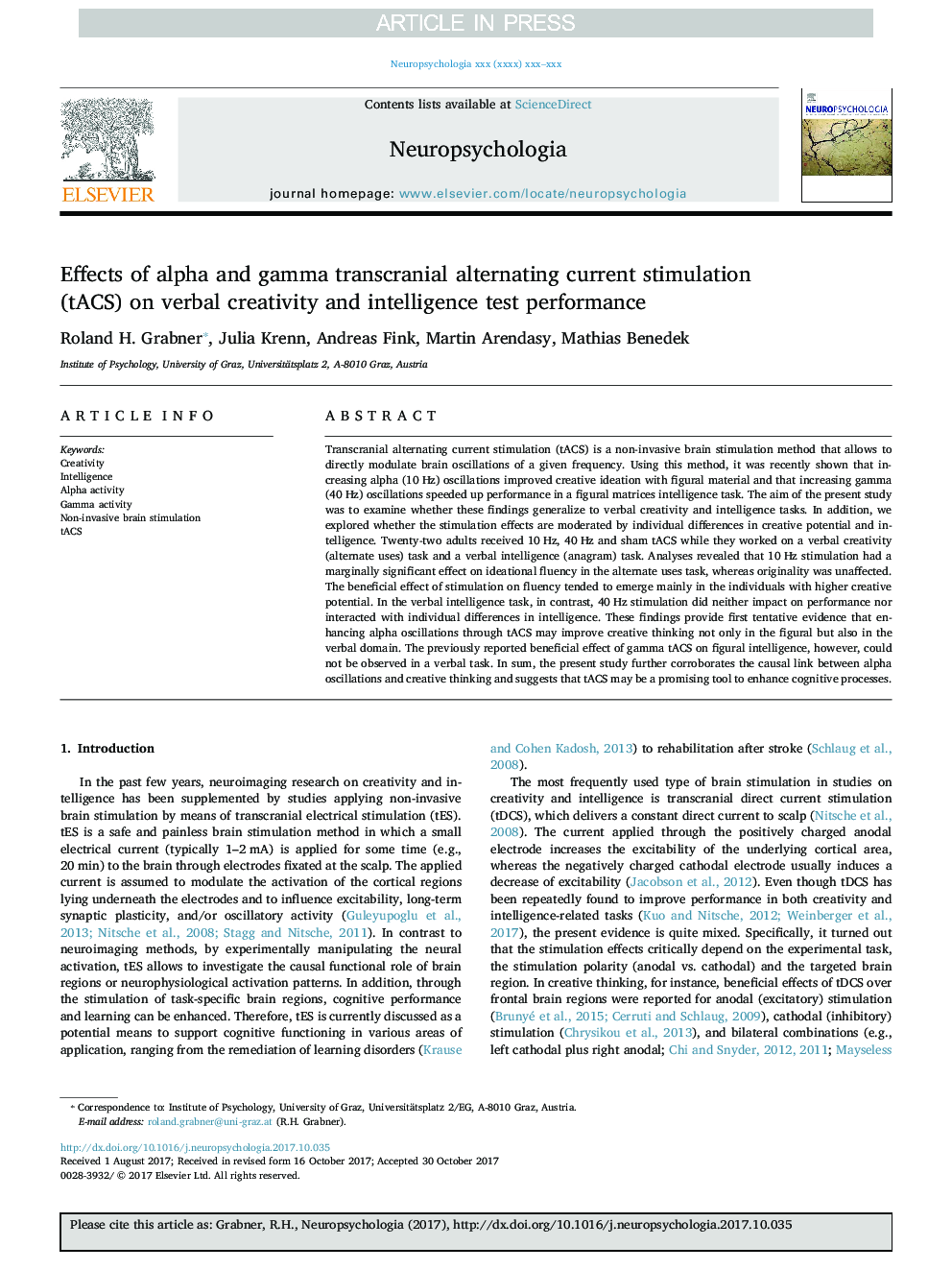| Article ID | Journal | Published Year | Pages | File Type |
|---|---|---|---|---|
| 10226719 | Neuropsychologia | 2018 | 8 Pages |
Abstract
Transcranial alternating current stimulation (tACS) is a non-invasive brain stimulation method that allows to directly modulate brain oscillations of a given frequency. Using this method, it was recently shown that increasing alpha (10Â Hz) oscillations improved creative ideation with figural material and that increasing gamma (40Â Hz) oscillations speeded up performance in a figural matrices intelligence task. The aim of the present study was to examine whether these findings generalize to verbal creativity and intelligence tasks. In addition, we explored whether the stimulation effects are moderated by individual differences in creative potential and intelligence. Twenty-two adults received 10Â Hz, 40Â Hz and sham tACS while they worked on a verbal creativity (alternate uses) task and a verbal intelligence (anagram) task. Analyses revealed that 10Â Hz stimulation had a marginally significant effect on ideational fluency in the alternate uses task, whereas originality was unaffected. The beneficial effect of stimulation on fluency tended to emerge mainly in the individuals with higher creative potential. In the verbal intelligence task, in contrast, 40Â Hz stimulation did neither impact on performance nor interacted with individual differences in intelligence. These findings provide first tentative evidence that enhancing alpha oscillations through tACS may improve creative thinking not only in the figural but also in the verbal domain. The previously reported beneficial effect of gamma tACS on figural intelligence, however, could not be observed in a verbal task. In sum, the present study further corroborates the causal link between alpha oscillations and creative thinking and suggests that tACS may be a promising tool to enhance cognitive processes.
Related Topics
Life Sciences
Neuroscience
Behavioral Neuroscience
Authors
Roland H. Grabner, Julia Krenn, Andreas Fink, Martin Arendasy, Mathias Benedek,
